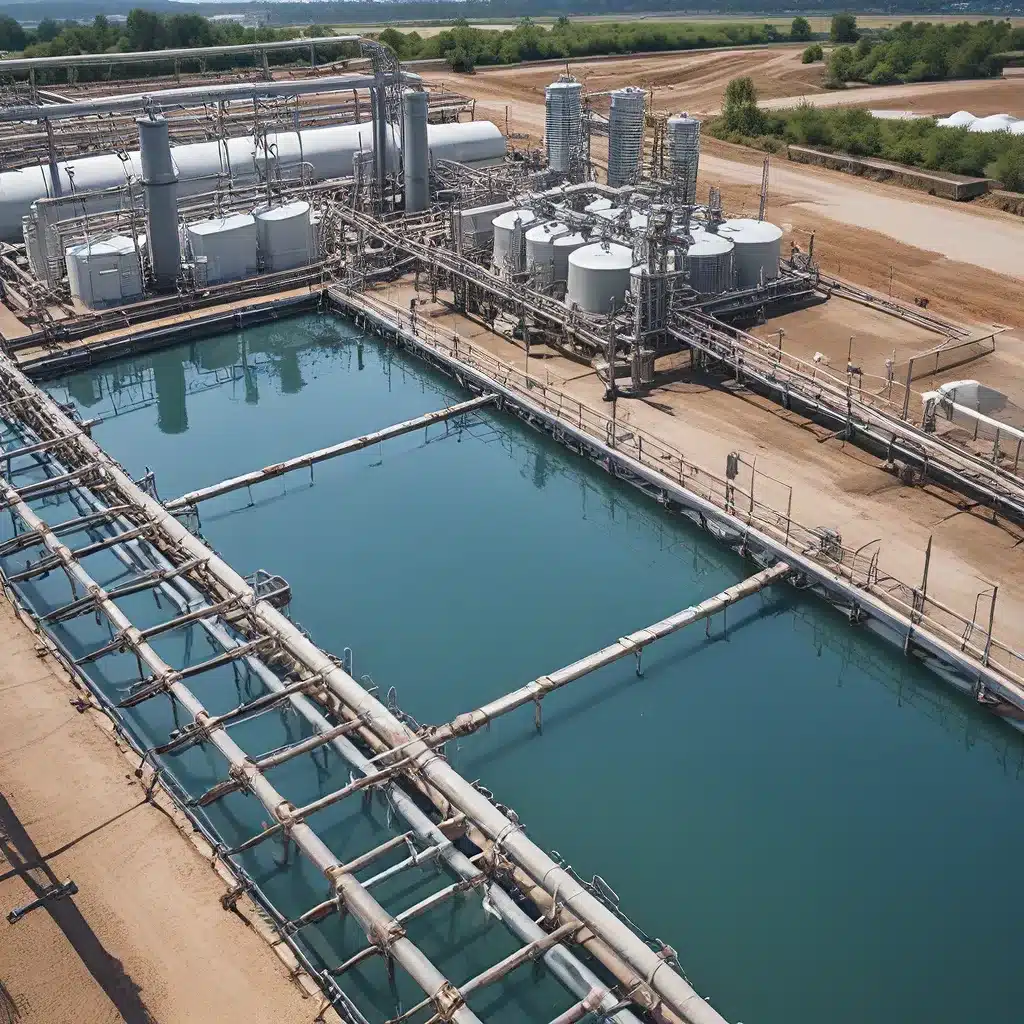
As someone who’s deeply passionate about the environment and the crucial role of water treatment, I’m thrilled to share my insights on how we can leverage cutting-edge analytics to revolutionize this field. It’s no secret that water is the lifeblood of our planet, and the way we manage this precious resource will have profound implications for generations to come.
The Power of Data-Driven Water Treatment
Imagine a world where water treatment facilities can anticipate and prevent disruptions before they even happen. Well, that future is closer than you might think, thanks to the incredible advancements in Industrial Internet of Things (IIoT) technology.
Veolia’s InSight platform, for example, combines advanced data analytics with real-time monitoring to provide water treatment professionals with unprecedented visibility and control over their operations. By aggregating and analyzing the thousands of data points from across the facility, InSight delivers actionable insights that can help prevent unplanned downtime, increase asset reliability, extend asset life, and optimize overall operations.
I recently had the chance to chat with the team at Inland Waters Inc., a local water treatment and environmental services provider, and they shared a fascinating story about how InSight helped them avoid a costly crisis. “Almost immediately after installation, InSight detected an issue that helped our operators prevent damage and save the membranes from early replacement,” the plant manager told me. “That single detection alone paid for the system many times over.”
But the benefits of advanced analytics don’t stop there. As a recent McKinsey report highlighted, digital tools like these can also help optimize water management operations, offering stability, reduced costs, and deferred expenditures for new capacity. One mining company, for instance, was able to increase its treatment capacity by 25% and eliminate plant upsets after implementing a cloud-based analytics platform.
Tackling the Complexities of Water Treatment
Of course, the water treatment industry is no stranger to complexity. From dealing with varying flow rates and pH levels to managing the intricate chemistry of dissolved solids and nutrients, operators have their work cut out for them. And let’s not forget the environmental and regulatory pressures that are only intensifying with each passing year.
As one expert explained, the wastewater from food processing alone can be incredibly diverse, reflecting the vast spectrum of products – from dairy to baked goods, each with its own unique challenges. Recognizing these challenges is just the first step; addressing them requires a strategic blend of advanced technologies, innovative strategies, and meticulous oversight.
That’s where the power of data analytics really shines. By incorporating online sensors and real-time monitoring, water treatment facilities can gain a much deeper understanding of the complex processes unfolding within their systems. And by coupling this data with sophisticated modeling and predictive algorithms, operators can make more informed decisions, optimize chemical dosing, and ensure proper settling times in the clarifiers.
The Digital Transformation of Water Treatment
But the digital revolution in water treatment isn’t just about sensors and software. It’s also about empowering the people on the frontlines – the operators, engineers, and technicians who are the backbone of this industry.
Inland Waters Inc., for instance, has been at the forefront of this transformation, leveraging connected worker technologies to streamline data collection, enhance collaboration, and make more agile, data-driven decisions. Gone are the days of manual measurements and redundant reporting; now, the team can access real-time insights from a cloud-based dashboard, right at their fingertips.
But the journey towards digital optimization doesn’t stop there. As the McKinsey report highlighted, the complexity of water treatment operations makes them particularly well-suited for advanced process control systems – the next frontier in automation. These systems can take the insights gleaned from data analytics and translate them into precise, autonomous adjustments to the treatment process, all while providing unparalleled visibility and control.
The Future of Water Treatment: Sustainability and Innovation
As we look to the future, it’s clear that the water treatment industry is on the cusp of a remarkable transformation. Sustainability and environmental stewardship will be at the forefront, as facilities strive to reduce their water footprint, minimize waste, and embrace the concept of water as a valuable resource, not just a byproduct.
And the innovations driving this change? They’re pouring in from all corners – from cutting-edge filtration techniques and environmentally-friendly chemicals to the latest advancements in artificial intelligence and materials science. It’s an exciting time, to be sure, and one that will demand close collaboration between engineers, technologists, and industry stakeholders.
But as daunting as the challenges may seem, I can’t help but feel optimistic about the future of water treatment. After all, the passion and commitment I’ve witnessed from the people in this industry are truly inspiring. They’re not just treating water – they’re safeguarding our planet’s most precious resource, one data point and one innovation at a time.
So, what does the future hold? Well, your guess is as good as mine. But one thing’s for certain: with the power of advanced analytics and the unwavering dedication of the water treatment community, the possibilities are truly endless.


